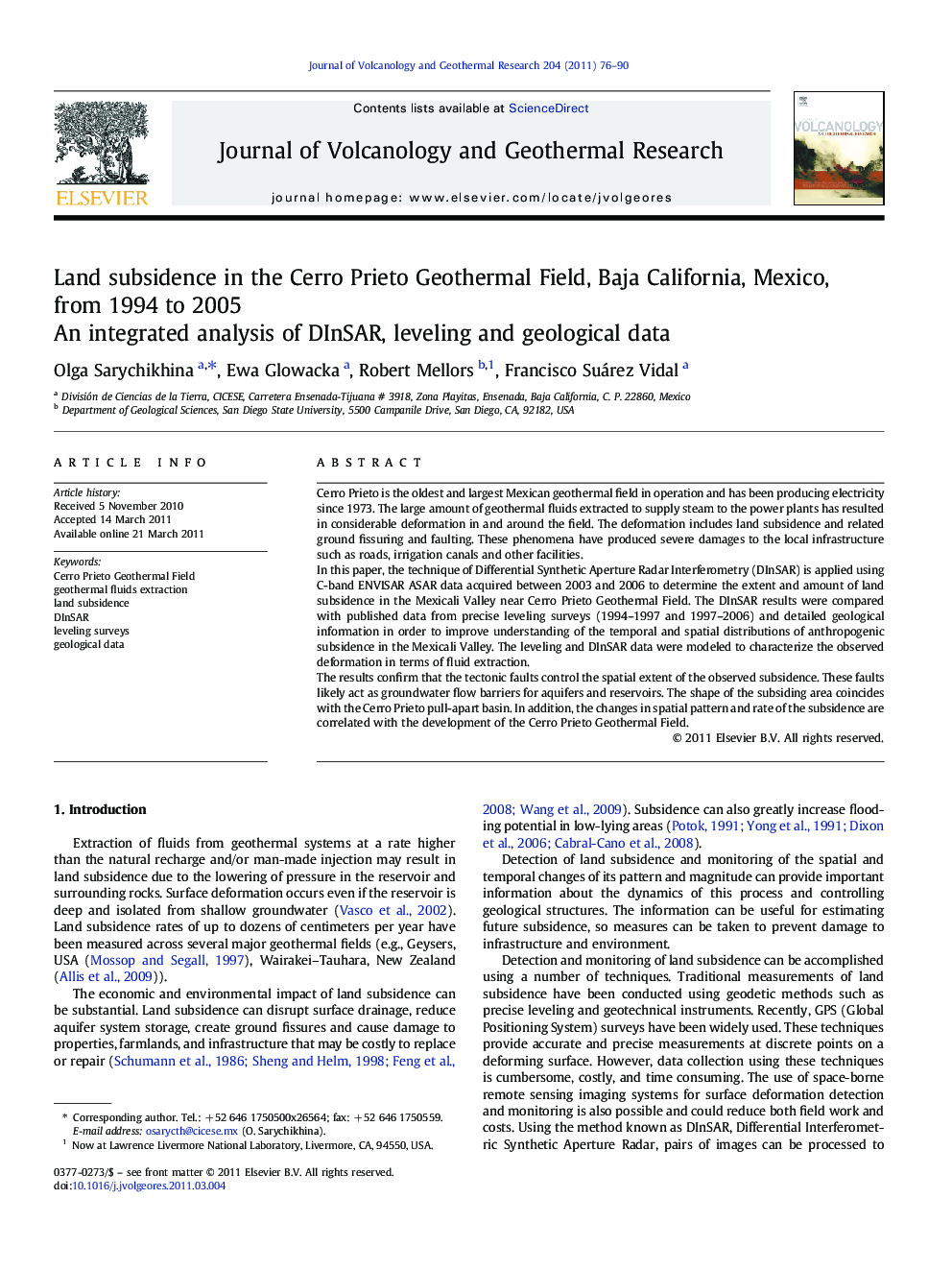| کد مقاله | کد نشریه | سال انتشار | مقاله انگلیسی | نسخه تمام متن |
|---|---|---|---|---|
| 4712823 | 1638401 | 2011 | 15 صفحه PDF | دانلود رایگان |

Cerro Prieto is the oldest and largest Mexican geothermal field in operation and has been producing electricity since 1973. The large amount of geothermal fluids extracted to supply steam to the power plants has resulted in considerable deformation in and around the field. The deformation includes land subsidence and related ground fissuring and faulting. These phenomena have produced severe damages to the local infrastructure such as roads, irrigation canals and other facilities.In this paper, the technique of Differential Synthetic Aperture Radar Interferometry (DInSAR) is applied using C-band ENVISAR ASAR data acquired between 2003 and 2006 to determine the extent and amount of land subsidence in the Mexicali Valley near Cerro Prieto Geothermal Field. The DInSAR results were compared with published data from precise leveling surveys (1994–1997 and 1997–2006) and detailed geological information in order to improve understanding of the temporal and spatial distributions of anthropogenic subsidence in the Mexicali Valley. The leveling and DInSAR data were modeled to characterize the observed deformation in terms of fluid extraction.The results confirm that the tectonic faults control the spatial extent of the observed subsidence. These faults likely act as groundwater flow barriers for aquifers and reservoirs. The shape of the subsiding area coincides with the Cerro Prieto pull-apart basin. In addition, the changes in spatial pattern and rate of the subsidence are correlated with the development of the Cerro Prieto Geothermal Field.
Research highlights
► Exploitation of the Cerro Prieto Geothermal field causes local ground deformation.
► An analysis of satellite observations, geological and geodetic data was performed.
► Modeling of observed deformation was conducted.
► The changes in subsidence are correlated with the development of the CPGF.
► The spatial extent of the observed subsidence is controlled by tectonic faults.
Journal: Journal of Volcanology and Geothermal Research - Volume 204, Issues 1–4, 1 July 2011, Pages 76–90